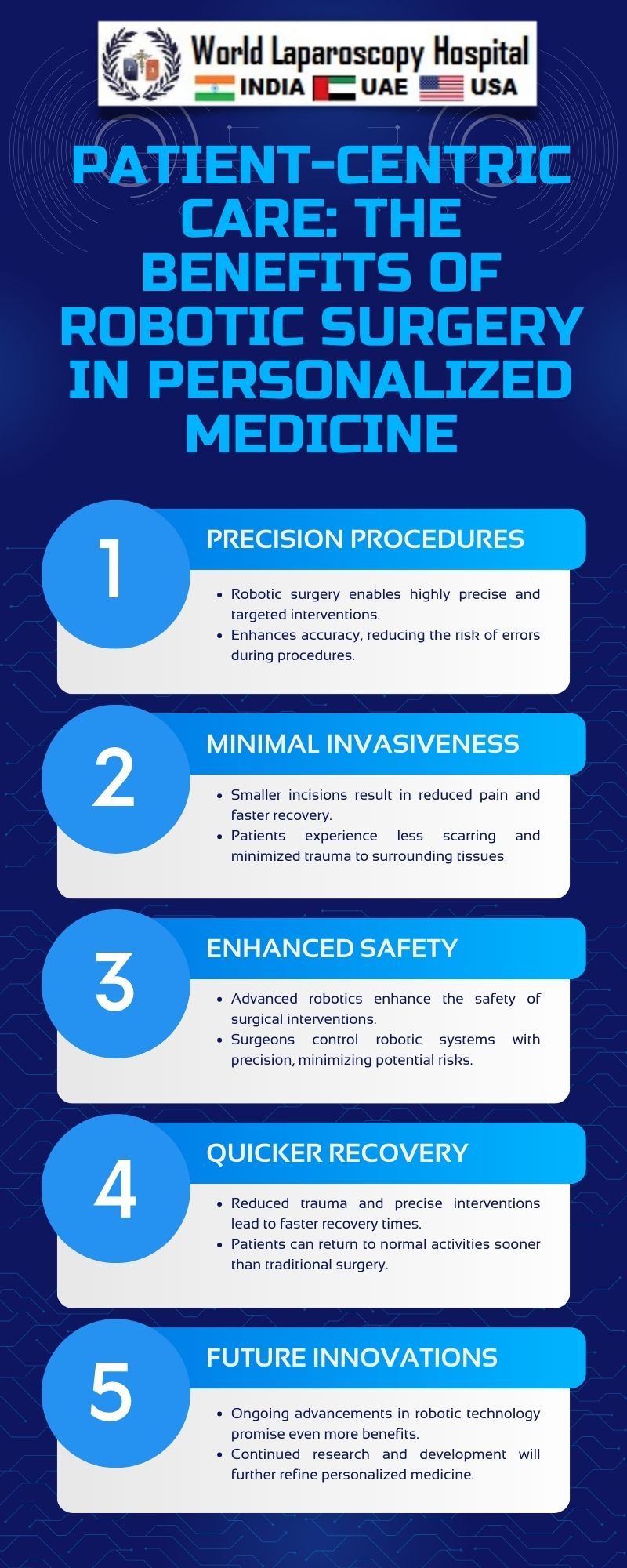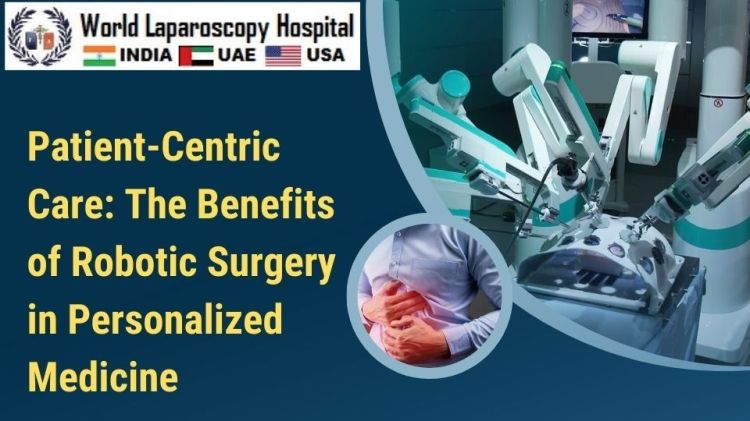Introduction:
In the ever-evolving landscape of healthcare, the focus has shifted dramatically towards personalized medicine, an approach that tailors medical treatment to the individual characteristics of each patient. One technological innovation that has played a pivotal role in advancing this patient-centric care is robotic surgery. This article explores the myriad benefits of incorporating robotic surgery into personalized medicine, emphasizing its transformative impact on treatment precision, recovery times, and overall patient satisfaction.

Personalized Medicine: A Paradigm Shift
Definition and Principles of Personalized Medicine
Personalized medicine involves tailoring medical decisions, practices, and interventions to individual characteristics of each patient. This approach relies on understanding the unique genetic, environmental, and lifestyle factors influencing a person's health.
The Need for Personalized Medicine
Traditional one-size-fits-all medical approaches often fall short in addressing the inherent diversity among patients. Personalized medicine seeks to overcome these limitations by providing targeted, efficient, and more effective treatments.
The Rise of Robotic Surgery
Evolution of Robotic Surgery
Robotic surgery has emerged as a cutting-edge technology, combining the precision of robotics with the expertise of skilled surgeons. Initially developed for military and space applications, robotic systems, such as the da Vinci Surgical System, have found a transformative role in the field of healthcare.
Mechanism and Functionality of Robotic Surgery
Robotic surgery involves the use of robotic systems controlled by surgeons to perform minimally invasive procedures. These systems consist of robotic arms equipped with surgical instruments and a console where the surgeon controls the movements with high precision.
Robotic Surgery and Personalized Medicine: A Symbiotic Relationship
Tailored Surgical Approaches
The integration of robotic surgery into personalized medicine allows for highly customized surgical procedures. Surgeons can adapt their approach based on individual patient characteristics, optimizing outcomes and minimizing potential risks.
Precision in Surgical Interventions
Robotic systems offer unparalleled precision, enabling surgeons to navigate intricate anatomical structures with greater accuracy. This precision is particularly crucial in complex procedures, such as tumor removal or organ transplantation, where minute errors can have significant consequences.
Minimally Invasive Techniques
One of the hallmark advantages of robotic surgery is its minimally invasive nature. Smaller incisions lead to reduced trauma, less blood loss, and faster recovery times. This aligns seamlessly with the goals of personalized medicine, emphasizing patient well-being and individualized care.
Advantages of Robotic Surgery in Personalized Medicine
Enhanced Treatment Outcomes
The precision and adaptability of robotic surgery contribute to superior treatment outcomes. Surgeons can tailor their approach based on a patient's unique anatomy, ensuring optimal results in terms of disease eradication, organ function, or symptom relief.
Shortened Recovery Times
Minimally invasive robotic procedures typically result in shorter recovery times compared to traditional open surgeries. This is particularly significant in personalized medicine, where the goal is to minimize the impact of treatment on the patient's overall well-being and daily life.
Reduced Complications
The meticulous control offered by robotic systems significantly reduces the risk of complications during and after surgery. This is of paramount importance in personalized medicine, where patient-specific factors may increase susceptibility to certain complications.
Improved Quality of Life
Personalized medicine aims not only to treat diseases but also to enhance patients' overall quality of life. Robotic surgery, with its emphasis on precision, reduced invasiveness, and quicker recovery, aligns perfectly with this objective, allowing patients to return to their normal lives more swiftly.
Challenges and Future Directions
Cost Considerations
Despite the numerous advantages, the implementation of robotic surgery in personalized medicine is not without challenges, including the high initial costs of acquiring and maintaining robotic systems. As technology advances and becomes more widespread, it is expected that these costs will decrease, making robotic surgery more accessible.
Training and Expertise
Surgeons require specialized training to operate robotic systems effectively. As the adoption of robotic surgery grows, the medical community must invest in comprehensive training programs to ensure that surgeons are proficient in utilizing these technologies for personalized patient care.
Ethical and Regulatory Considerations
The integration of robotic surgery into personalized medicine raises ethical questions related to patient consent, data privacy, and the potential for overreliance on technology. Regulatory frameworks must evolve to address these concerns and ensure the responsible and ethical use of robotic systems in healthcare.
Conclusion
The marriage of robotic surgery and personalized medicine represents a significant leap forward in the delivery of patient-centric care. As technology continues to advance and the medical community gains experience with these innovations, the benefits of robotic surgery in personalized medicine are poised to become even more pronounced. This synergy between cutting-edge technology and individualized patient care heralds a new era in healthcare, where precision and compassion converge to redefine the possibilities of medical treatment.
